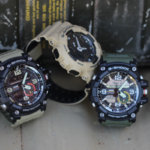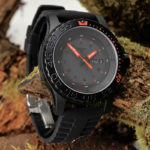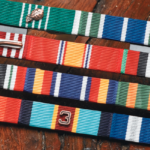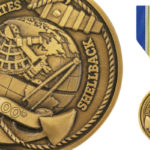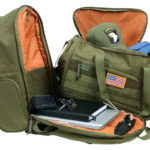Military Awards and Decorations Regulation
As the next post in this “Dissertation on Diversity”, the following differences in ribbon wear between the various Armed Services are submitted without further comment:
A. The Air Force is the only Branch of the Service to authorize the wear of miniature ribbon bars on the uniform.
B. The Air Force permits a second ribbon award to be worn if more than four (4) devices are authorized for wear on a single ribbon bar. The Army also specifies a limit of four (4) oak leaf clusters on the ribbon bar and recently authorized a second ribbon to be worn to display any excess clusters. This solves the question of a 10th, 14th, 15th, etc. award as the recipient previously had no way to display the requisite number of silver and bronze clusters.
C. Unit awards worn by Army personnel are unique in that the gold frames are physically larger (1/2″ vs. 3/8″ high) and are worn on the right breast of the Army uniform. This regulation is also applicable to unit awards received from other Services or from foreign governments. If this seems unusual, consider the original Army scheme (circa 1960) that placed the Presidential Unit Citation on the right breast, other U.S. unit awards on the left breast amongst the other ribbons, foreign unit citations below all other ribbons on the left breast pocket flap and the Meritorious Unit Commendation in the form of a sew-on patch on the lower right-hand sleeve.
D. The Navy, Marine Corps and Coast Guard follow the “right-side” precedent to a limited extent, requiring ribbons that have no associated military medals, e.g., Combat Action, Unit, Marksmanship, etc., to be worn on the right breast on those occasions when full-sized medals are authorized. But, as before, there is disagreement on the order of wear. The Marine Corps requires a “top to bottom, wearer’s right to wearer’s left” arrangement while the Navy and Coast Guard specify an “inboard to outboard” display”. By contrast, neither the Army nor the Air Force permits these “ribbon-only” awards to be worn on the uniform when full size or miniature medals are specified.
E. The Army and the Coast Guard Uniform Regulations stipulate that unit awards with gold frames be worn with the laurel leaves on the frame pointing up. The Marine Corps accomplishes the same goal by requiring the laurel leaves to form a “V” (point down). On the other hand, no other awards or uniform regulations mention the subject.
F. The Army is the only Service to permit the wear of unit awards by personnel who did not participate in the action for which it was cited. Any individual joining at a later date may wear the unit award while permanently attached, but must relinquish it upon subsequent reassignment.
G. Army and Marine Corps ribbons may, at the wearer’s option, be worn with a 1/8″ separation between adjacent rows. The other Services do not permit any such separation.
H. Similarly, the maximum number of ribbons that may be displayed in each row depends on which Service is being discussed.
I. The Marine Corps, in an unfortunate reference to the senior status of the color blue in heraldry, specifies the wear of the ribbon for the Merchant Marine Mariner’s Medal in the order of blue, white, red (as seen by an observer) thus putting themselves out of step with all of the other Services as well as the dictates of the awarding agency itself.
J. On a number of occasions, the Services have awarded more than one medal for the same combat action.
K. Then consider the refusal of some Services to permit the wear of certain awards of the other Branches.
L. The Coast Guard treats the Department of Transportation (originally the Treasury Department) Gold and Silver Lifesaving Medals, as military decorations. On the Coast Guard ribbon chest they are afforded a specific position in the Coast Guard order of precedence. All other Services, however, consider them to be nonmilitary decorations with no absolute precedence within the group.
M. As another sidelight to this discussion, the Coast Guard is alone in specifying additional award devices for the Gold and Silver Lifesaving Medals (5/16″ gold star) and the Antarctica Service Medal (3/16″ bronze star).
N. The Coast Guard is also the only Service to include military awards to civilians in its list of military decorations. The cases in point are six Department of Transportation awards: (Gold, Silver and Bronze Medals and three new 9-11 awards) which may be worn on the Coast Guard uniform.
O. Another amusing point to ponder is concealed in the Marine Corps Uniform Regulations in the paragraph under bronze letter “V” (Combat Distinguishing Device). In describing this device, the regulation states that the “… approved bronze letter “V” is gold in color.”
P. Finally, the ultimate in awards with little significance is the Army Service Ribbon. Since this ribbon is awarded to all officers or enlisted men who have successfully completed any entry-level training course, EVERY PERSON in the U.S. Army is entitled to wear it. Unlike a true general service award, e.g., National Defense Service Medal, the Army Service Ribbon has no termination date and requires no “service” of any kind.
